

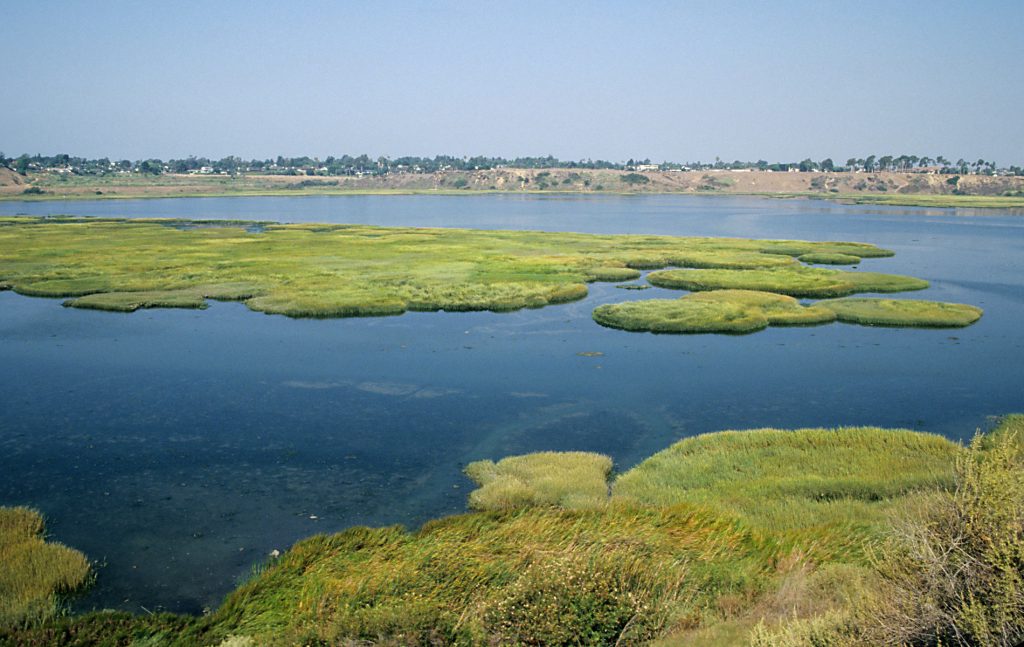
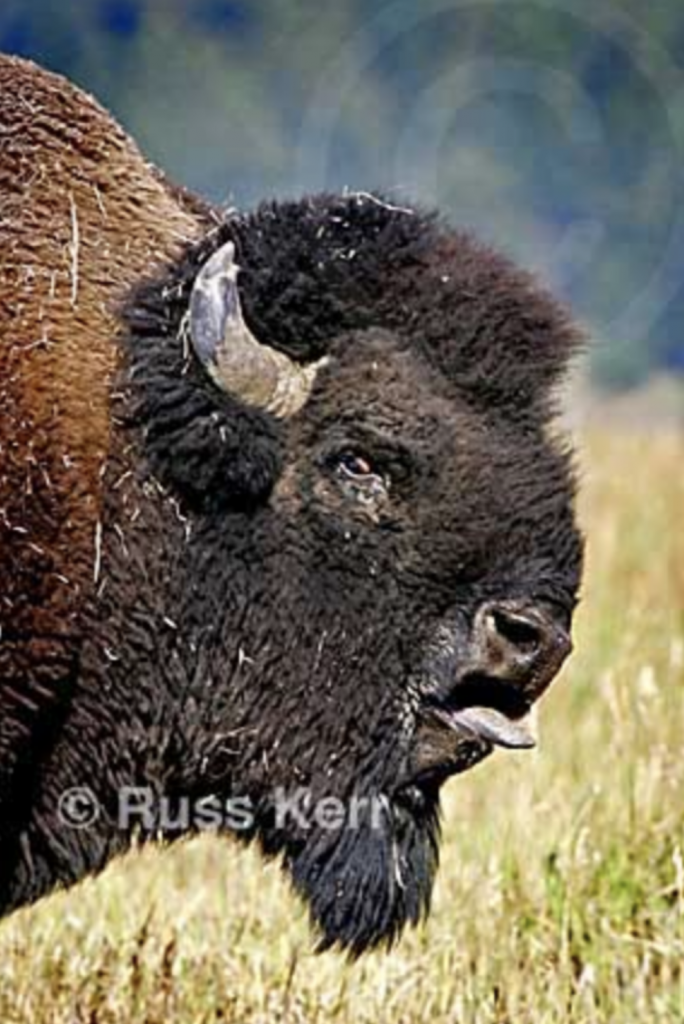
This adult bull bison seems to be saying “bah, humbug” as he calls while his photo is safely taken from a vehicle. Male bison stand about 6′ at the shoulder, and can weigh up to 2000 lbs., deserving respect and a safe distance when viewing or photographing bison.
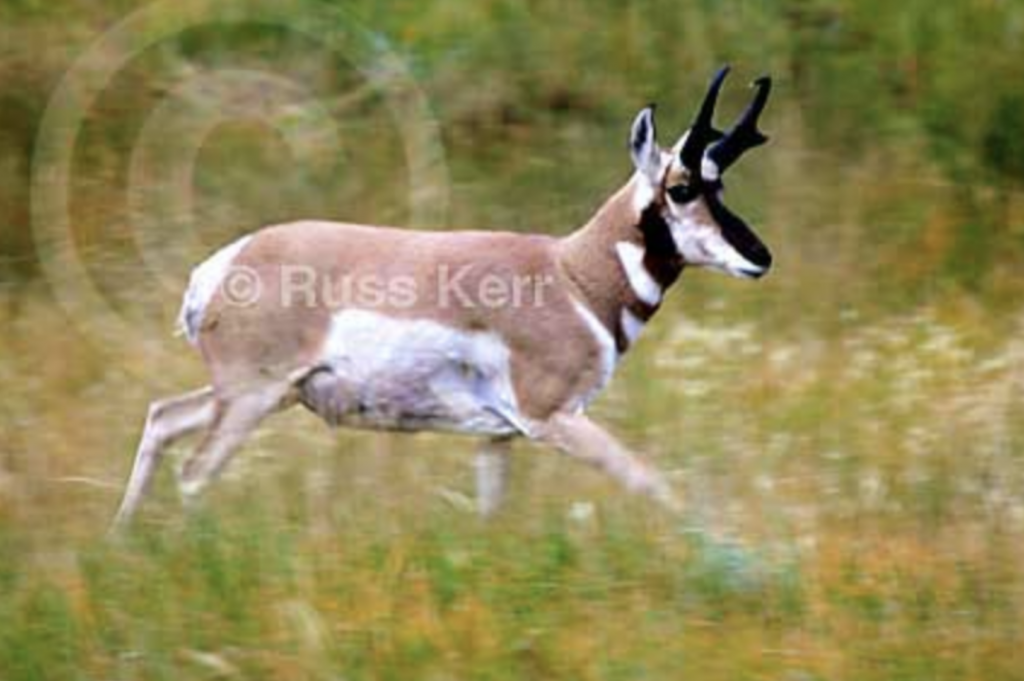
This beautiful Pronghorn buck runs across the grasslands of Lamar Valley in Yellowstone National Park. Pronghorn are reported to be the fastest animal in the western hemisphere, having been clocked at 70 mph for a few minutes.
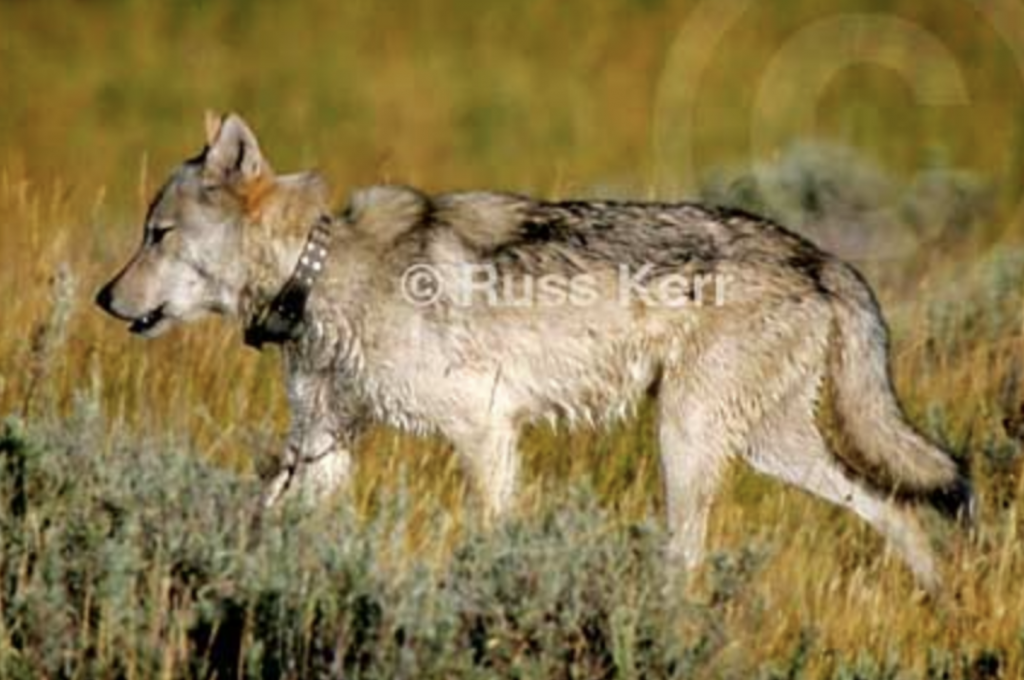
This photo, taken in August 2006, shows the big alpha male Gray Wolf from the Hayden Valley pack in Yellowstone National Park as he trots across the grasslands. The alpha male was radio collared along with his alpha female in Hayden Valley to keep track of these wolves as they roam about. This alpha male Gray Wolf weighed 118 lbs at the time of his collaring.
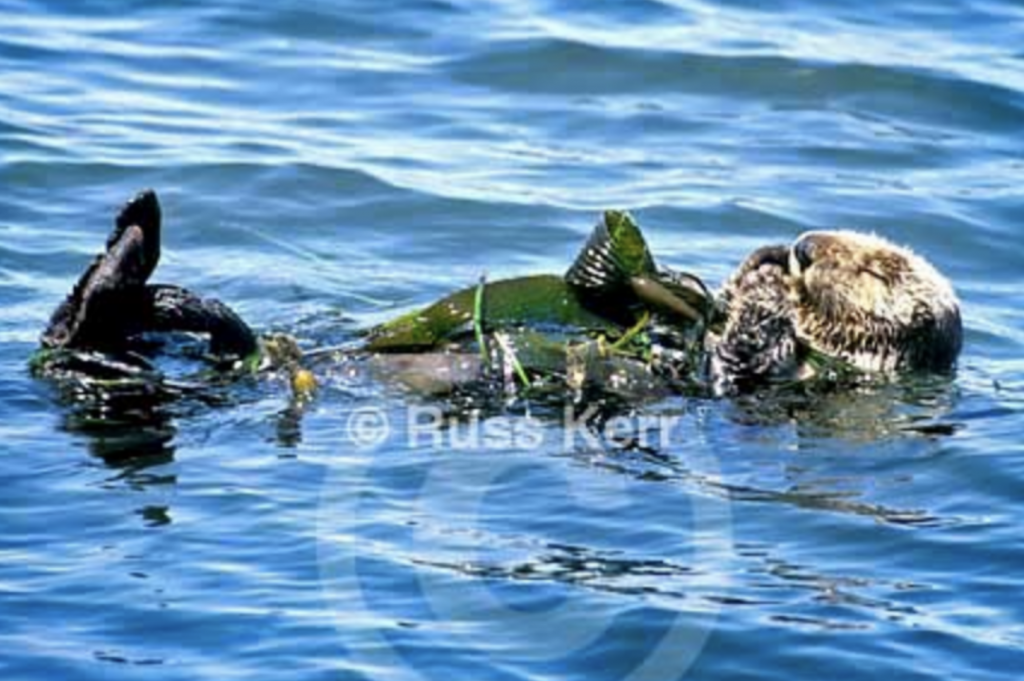
This Sea Otter is doing one of its favorite pastimes, resting on the water after anchoring itself by wrapping up in seaweed. This is also the Sea Otter’s eating position after diving for shellfish, when it places a rock on its chest and cracks the shell against it.
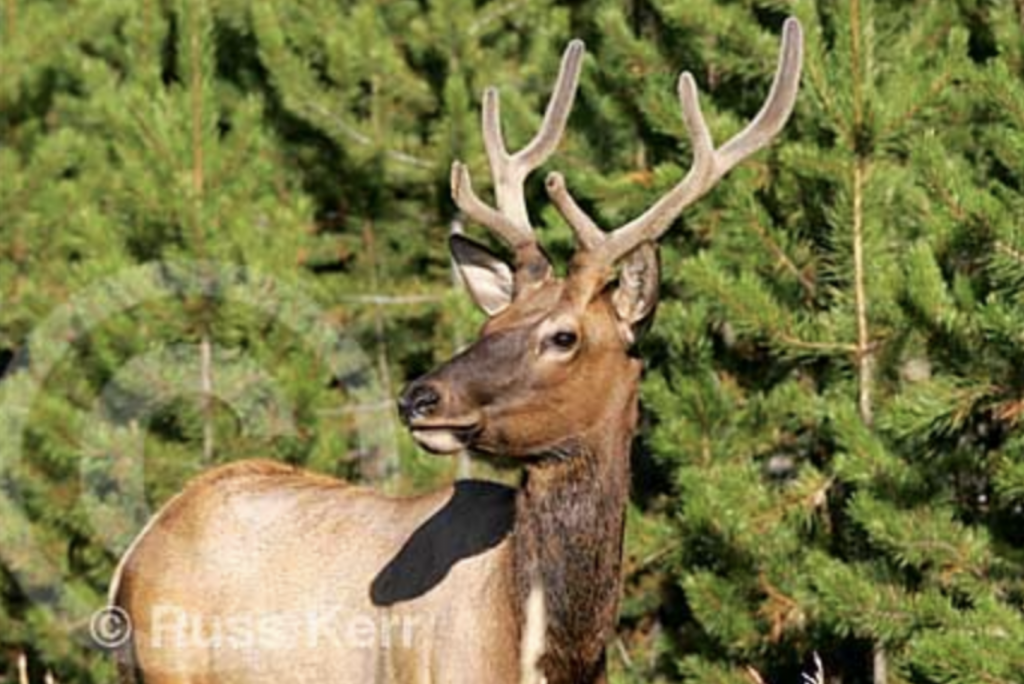
A beautiful bull Elk stops to survey his surroundings, sporting new antlers still covered with velvet late in August. The rutting season is about to begin, and the velvet will be rubbed off on surrounding bushes and trees before the serious clashes begin.
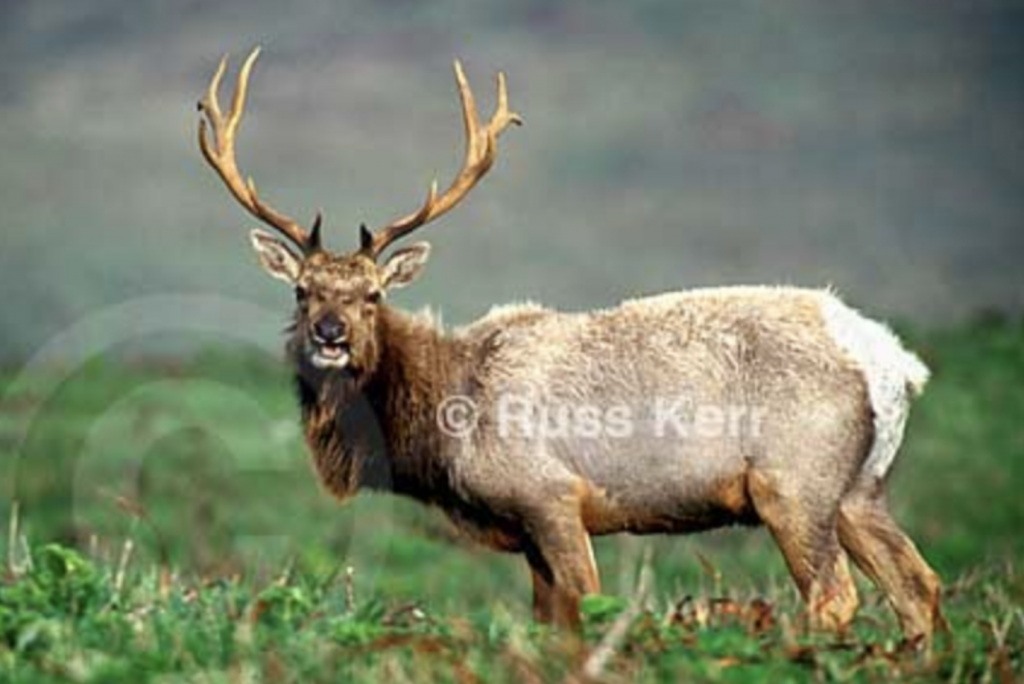
It’s January, and this bull Elk still has his mature 6 point antlers testifying to his formidable strength and maturity. Elk spend much of their time grazing, and are especially active at dusk and at dawn.
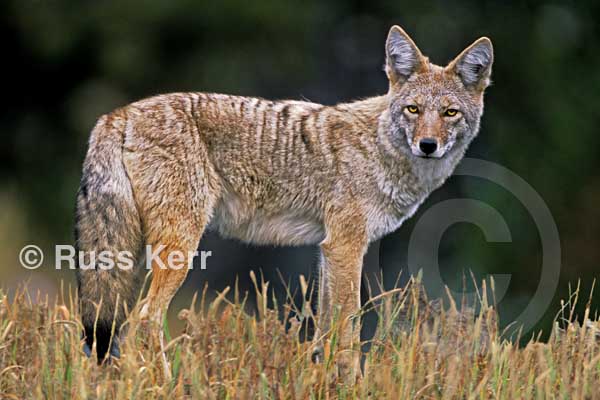
Coyotes are highly intelligent and adaptive animals, and seem to thrive even in the presence of man. The eyesight, hearing, and sense of smell are highly developed in the coyote. They are social animals traveling in packs with a clearly defined hierarchy of dominance. The coyote’s haunting calls between dusk and dawn always let their presence be known.
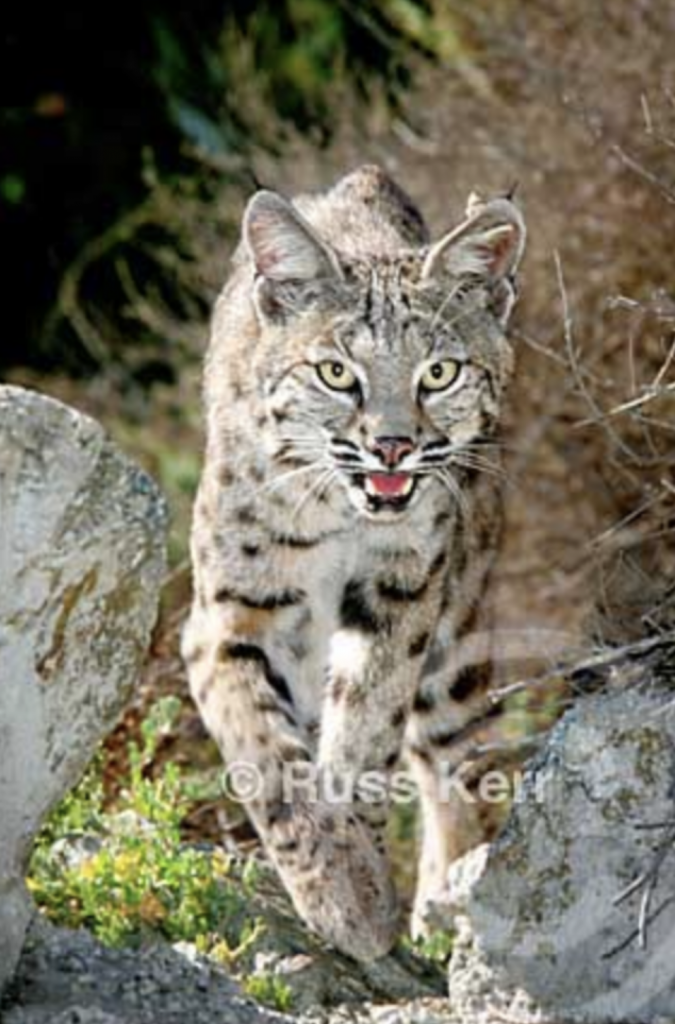
This female Bobcat, locally known as “Babe”, has been ear-tagged in her left ear, and had previously been GPS collared to learn her roaming habits near the Upper Newport Bay Ecological Reserve in So. California. Female Bobcats average 18″ in shoulder height and weigh about 14 lbs.
To see a additional Bobcat images CLICK HERE
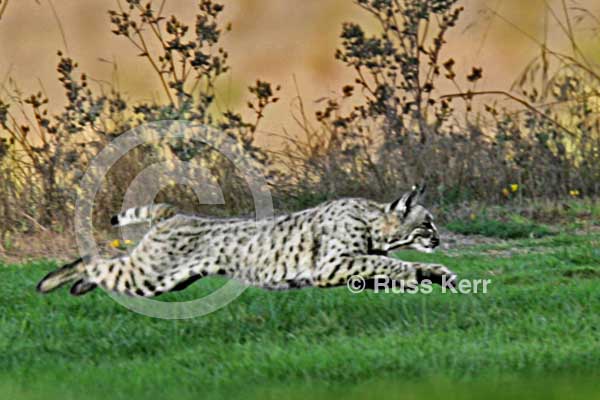
This photo shows an adult female Bobcat stretched out at maximum speed as she pursues a rabbit on an adjacent greenbelt. She successfully caught the rabbit.
To see a additional Bobcat images CLICK HERE
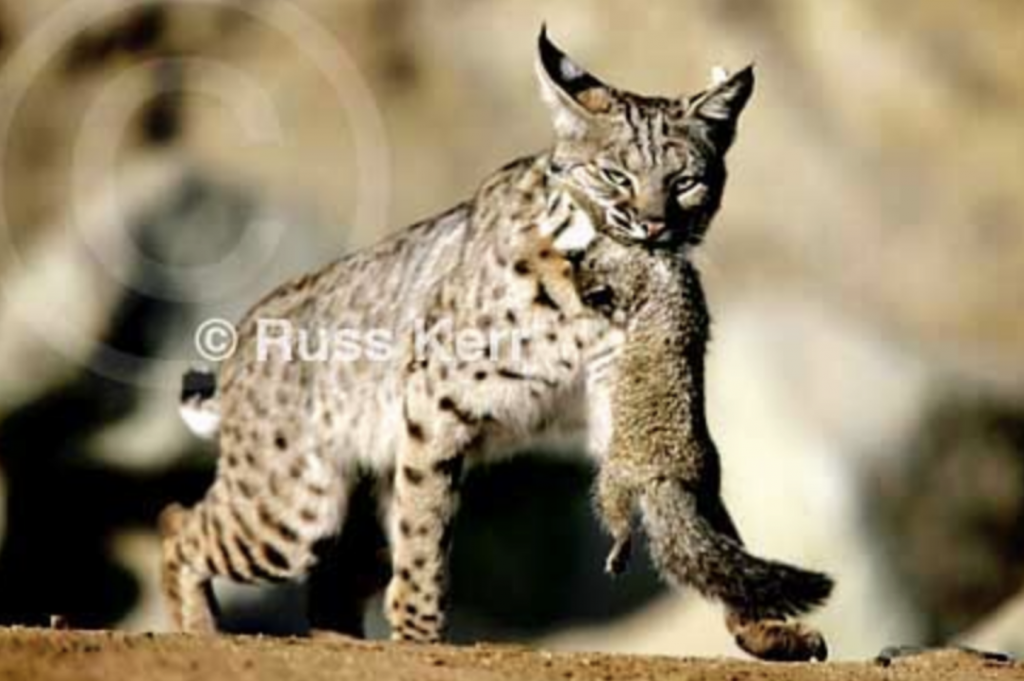
Bobcats are adept hunters, as you see this adult Bobcat after a successful catch of a California Ground Squirrel. Rabbits are their favorite prey, but they will also catch rodents and birds. This Bobcat has been ear-tagged to aid in its identification.
To see a additional Bobcat images CLICK HERE
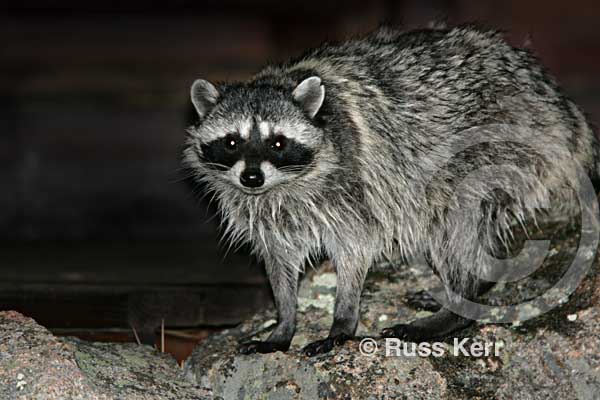
Raccoons are nocturnal and very intelligent. They are opportunistic omnivores common near wooded streams, with front paws that have amazing sensitivity and dexterity for finding their food. Their “masks” are actually an anti-glare device that reduces glare into their eyes, similar to athletes putting black marks under their eyes.
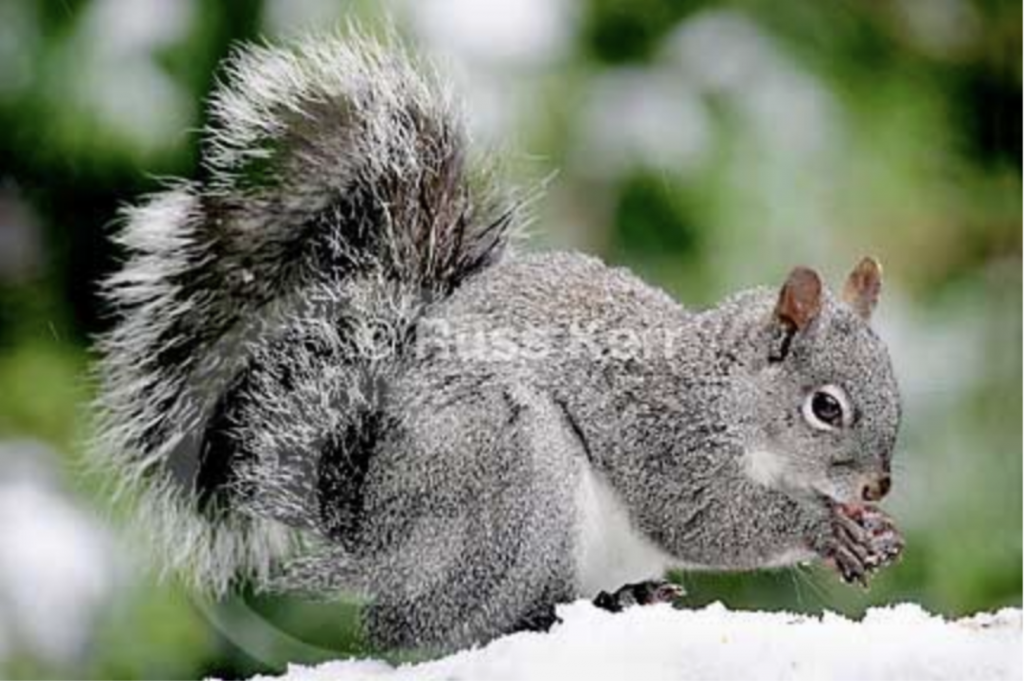
This Western Gray Squirrel is busy feeding after a fresh snowfall, and has large internal cheek pouches for storing any extra food that it finds. The squirrel’s family name means “shade-tail”, referring to their habit of holding a bushy tail over their backs.
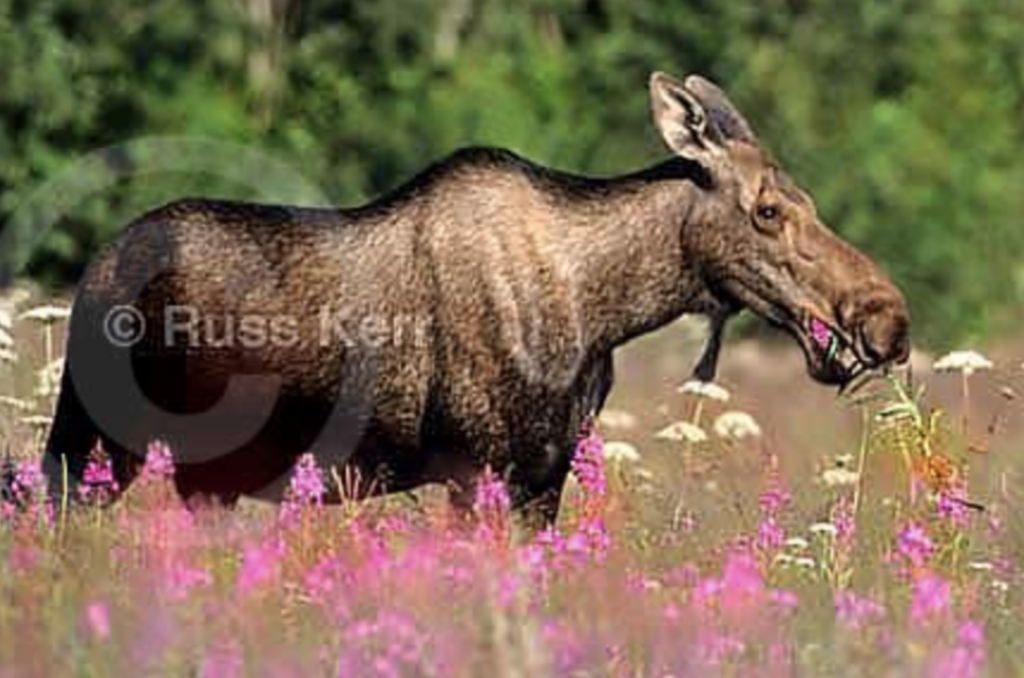
Moose are the largest deer in the world. This photo shows a Moose cow feeding in a meadow full of Fireweed wildflowers in Alaska, pulling them up by the roots to eat them. Moose mating season is mid September to late October, and the pregnant cow will have an 8-month gestation period before giving birth to an average of 1-2 calves.
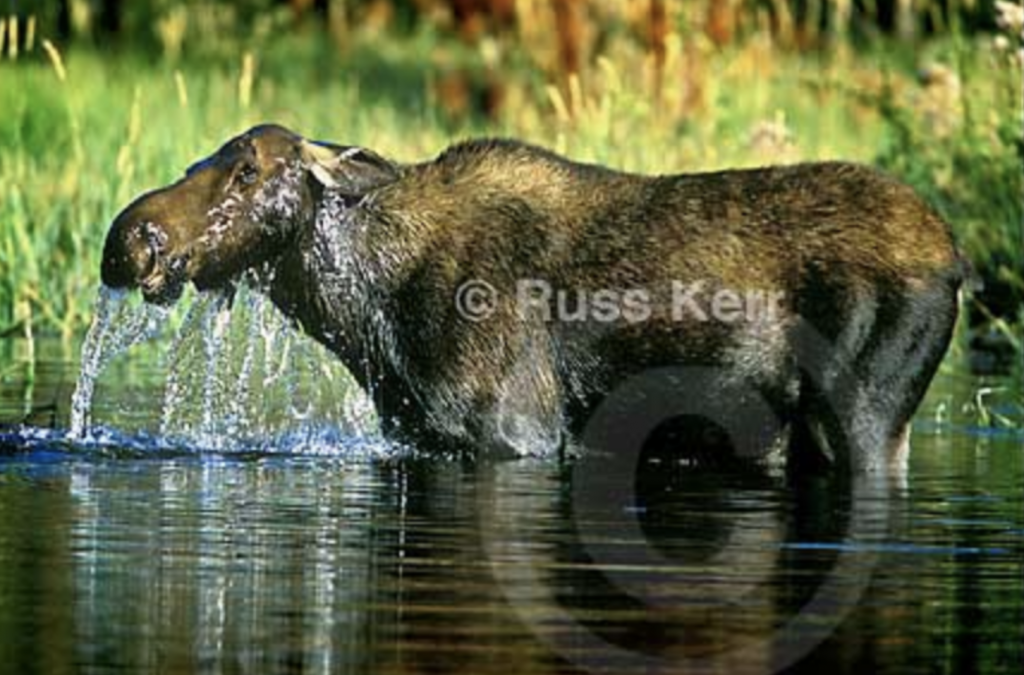
This photo shows a Moose cow feeding on plant life at the bottom of this beaver-made pond, coming up for air and to finish chewing. Cows can weigh up to 1100 lbs. and stand 7 feet at the shoulders. Despite the weight, moose can run up to 35 mph, earning respect for giving them a safe viewing distance, especially when a cow has a nearby calf.
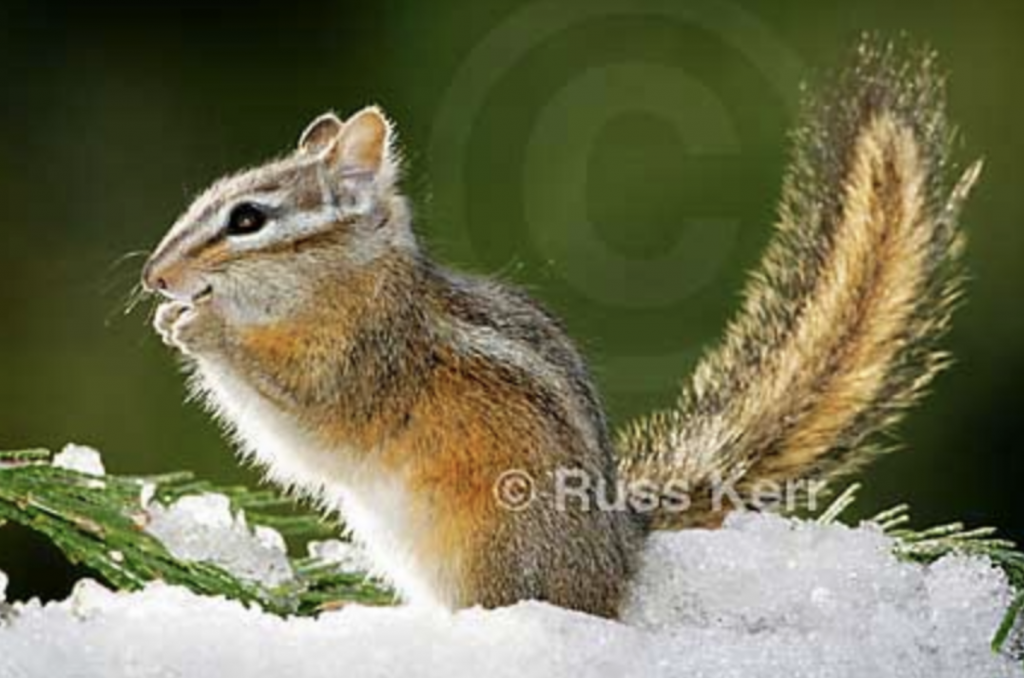
A Merriam’s Chipmunk is busy eating and filling its large internal cheek pouches to store food for eating later. This winter photo shows the chipmunk’s beautiful intricate tail backlit by the sun.
Russ’ celebrated collection of photographs have been cherished by bird enthusiasts, naturalists, conservationists, educators and photo specialists all over the world.
For decades, Russ’s images have have been licensed, framed and printed and displayed in high profile places for many to enjoy.
If you would like to see more images of a particular subject, please contact Russ HERE..
Also, if you would like to own a digital, high resolution copy for your web site, textbook, or to be printed and framed, send a message to Russ HERE. Be sure to include the photo ID you’ll find int his watermarked gallery.